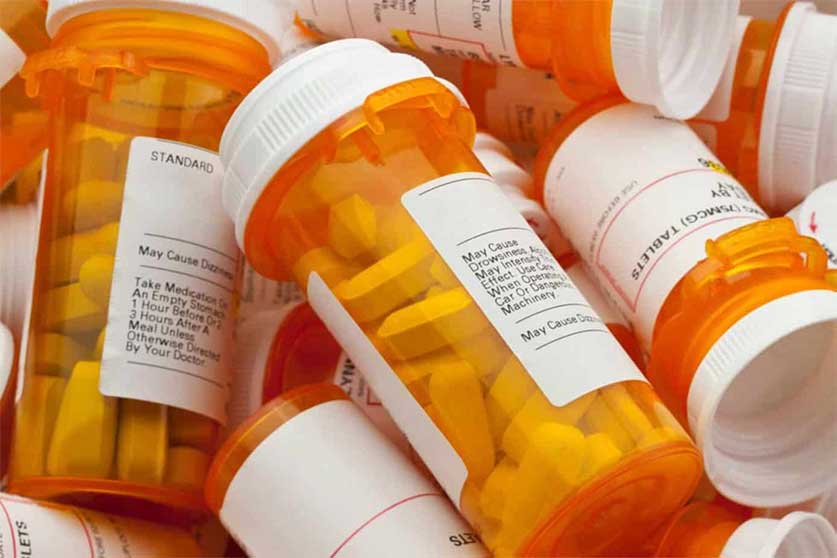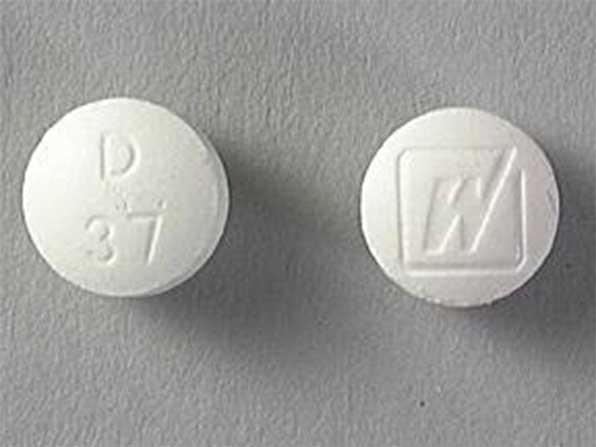What Does Demerol (Meperidine) Look Like?

Medically Reviewed By: Manish Mishra, MBBS

Written by: Dr Jason Martin Psy.D., LCPC
Most Demerol pills are white and round 50 mg and 100 mg dosages. However, the imprint on each tablet varies depending on the manufacturer.

Demerol is the brand name for meperidine/meperidine hydrochloride. It’s classified as an opioid analgesic (painkiller) prescription drug that’s used for the short-term treatment of moderate to severe pain.
It works by binding to the opioid receptors in the central nervous system (CNS) and changing how the body responds to pain.
What a Demerol pill looks like depends on who manufactured it. The dose, shape, color, and imprint can differ, but most Demerol tablets are white and round.
What Does Demerol Look Like?
Demerol primarily comes as an oral tablet that’s white in color and round in shape. Where they differ is in the strength of each tablet and the imprint that is on each pill.
50 MG
50 mg Demerol tablets are white and round with imprints that include:
- W D 35
- 381 b
- M 7113
- A 158
- 54 879
- 726 50 WATSON
- 4171 V

100 MG
White and round Demerol tablets that are 100 mg dosage can have imprints that include:
- D 37 W
- barr 382
- 7115 M
- A157
- 54 163
- 727 100 WATSON
- 4172 V

Signs Of Demerol Abuse
Demerol is classified as a Schedule II controlled substance by the Food and Drug Administration (FDA). This means the drug has a high potential for abuse and can lead to physical dependence and addiction.
If you’re worried that a loved one may be struggling with opioid drug abuse, there are some signs you can look out for to determine if your suspicions are warranted or not:
- loss of interest in regular activities
- changes in friend group
- visiting several doctors in an attempt to acquire multiple prescriptions
- using Demerol in dangerous situations
- abusing Demerol after having experienced negative consequences
- borrowing or stealing Demerol that has been prescribed to another person
- neglecting personal, school, or work responsibilities to use Demerol
- acting in a reckless or risky manner
- lying about one’s whereabouts or activities
- withdrawing from family and friends
Signs of Demerol abuse also include increased side effects and withdrawal symptoms, mixing Demerol with other substances, and opioid overdose.
Increased Side Effects & Withdrawal
Like most medications, Demerol comes with a variety of side effects. Some of the most common side effects of Demerol include:
- lightheadedness
- dizziness
- headache
- mood changes
- nausea
- vomiting
- loss of appetite
- stomach pain
- constipation
- dry mouth
- sweating
- changes in vision
- urinary retention
Due to the strength of the opioid, Demerol may also cause withdrawal symptoms when you stop using it. Opioid withdrawal symptoms can include cravings, irritability, and insomnia.
Mixing Demerol With Other Substances
Without medical advice or the supervision of a healthcare professional, mixing any drug with Demerol can be dangerous. The negative drug interactions that can occur when Demerol is mixed with other prescription and/or illicit drugs can even be life-threatening.
Some of the drugs that shouldn’t be mixed with Demerol include:
- over-the-counter supplements
- benzodiazepines (alprazolam, diazepam, and lorazepam)
- ritonavir (Norvir)
- 5-HT3 receptor antagonists like alosetron (Lotronex)
- selective serotonin reuptake inhibitors (citalopram fluoxetine, and sertraline)
- serotonin-norepinephrine reuptake inhibitors (duloxetine and venlafaxine)
Demerol is also mixed illegally with cocaine, methamphetamines, Adderall, or other stimulants to make what is known as a “speedball.”
It may also be combined with other opioids and CNS depressants like hydrocodone and oxycodone. A speedball can lead to serious side effects like mood changes, irregular heart rate, and an increased risk of overdose.
Overdose
Because Demerol has a high potential for substance abuse, there is a risk of opioid overdose as well. If you take too much of the medication for your body to handle, or mix it with other drugs, an overdose can be fatal. In 2020, there were over 5,000 opioid overdose deaths in Ohio.
Signs and symptoms of a Demerol overdose can include:
- changes in pupil size
- low blood pressure
- breathing problems/respiratory depression
- severe sedation and drowsiness
- muscle twitching
- blue fingernails and lips
- clammy skin
If you or someone you know is experiencing any of these symptoms, administer naloxone (Narcan) and call 911 immediately.
If you or a loved one are struggling with opiate/opioid abuse, we provide a range of addiction treatment options like inpatient detox, inpatient drug rehab, medication-assisted treatment, and aftercare support.
To learn more, please call our helpline today.
- Ohio Department of Health — Drug Overdose https://odh.ohio.gov/know-our-programs/violence-injury-prevention-program/drug-overdose/
- Food and Drug Administration (FDA) — Demerol https://www.accessdata.fda.gov/drugsatfda_docs/label/2011/005010s050lbl.pdf
- National Library of Medicine: MedlinePlus — Meperidine https://medlineplus.gov/druginfo/meds/a682117.html

